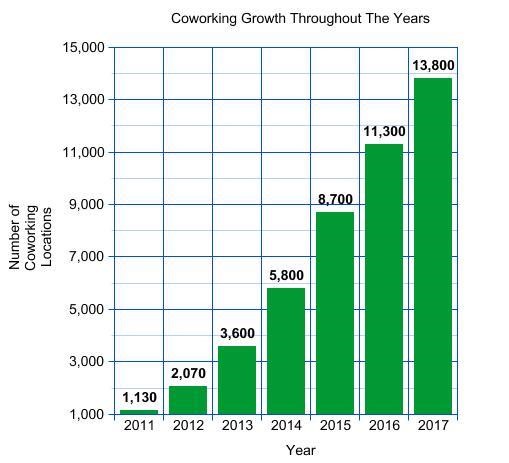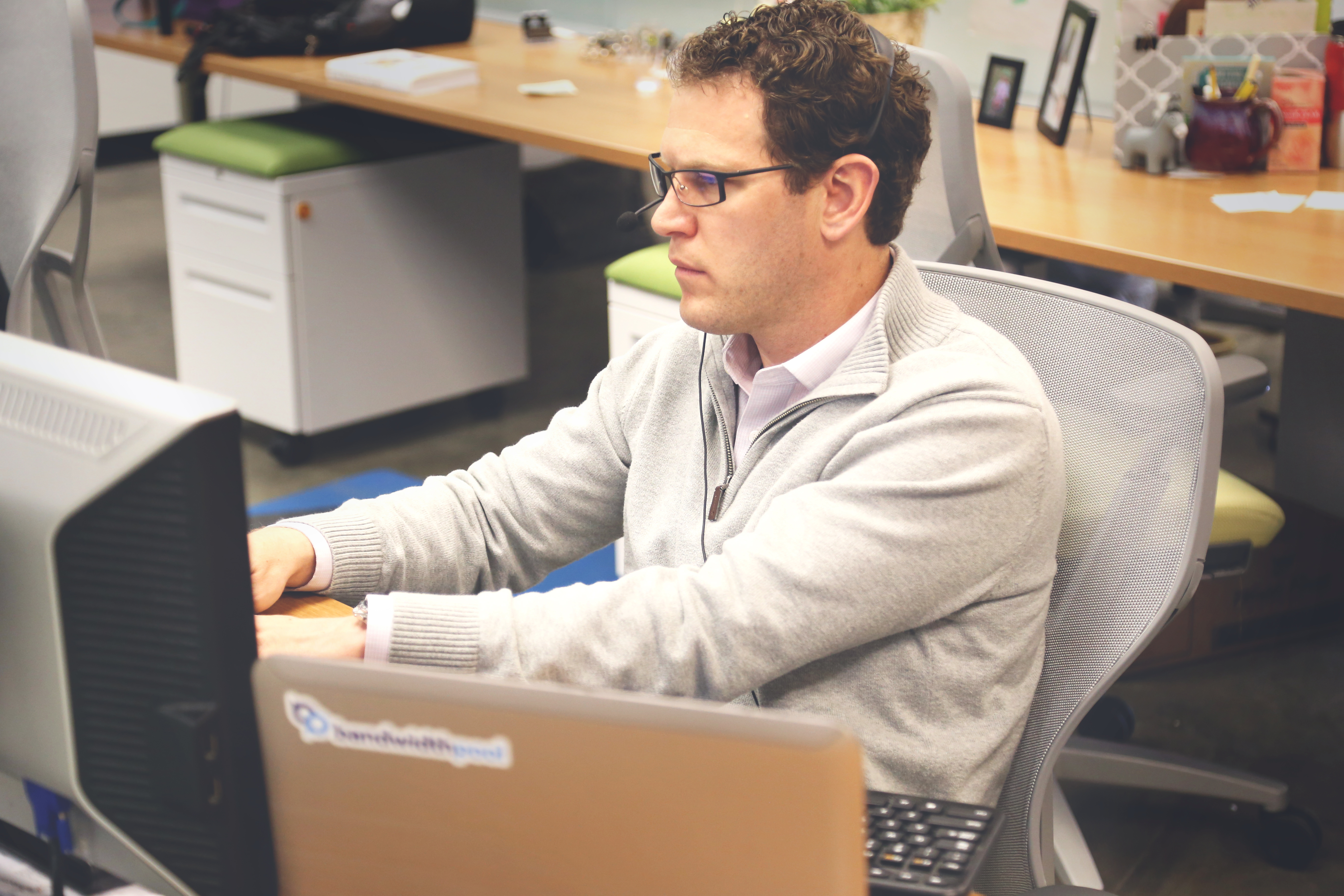Coworking is starting to take over the workforce. In fact, an independent analysis has found that coworking spaces have expanded 13 fold from just 1,130 spaces available globally in 2011 to 13,800 coworking spaces in 2017. So, what is coworking?
What is a Coworking Space?
A coworking space, also called a shared workspace or a community workspace, is a shared working environment for people, usually from different occupations and companies, who want to work in an environment filled with others from the workforce, versus working in a space (like one’s home or a coffee shop) independently.
These people are usually independent contractors, freelancers, entrepreneurs, those working from home, and those who travel frequently. This allows each person to experience working in a traditional office filled environment with others, while doing their own thing.
Popularity of Coworking
The popularity of coworking and shared office spaces is growing in part because of the changing workforce. It’s predicted that by 2020, 40% of the workforce will be freelancers, independent contractors, and solopreneurs.
Here is how the number of coworking locations has grown through the years:
- 2011: 1,130
- 2012: 2,070
- 2013: 3,600
- 2014: 5,800
- 2015: 8,700
- 2016: 11,300
- 2017: 13,800
Coworking Industry Growth

And they’re not all independent real estate locations. Companies like WeWork have 184 office locations around the globe and provide consistent office standards with super-fast Internet, spacious common areas and networking opportunities.
We all know that coworking spaces have many advantages, though they also present some challenges when it comes to productivity. Whether you’re easily distracted or prone to productivity, let’s look at how you can get the most out of your coworking workday.
PRIORITY MATRIX HELPS MANY IN SHARED WORKING ENVIRONMENTS INCREASE PRODUCTIVITY
TRY PRIORITY MATRIX FOR FREE NOW
(no credit card needed – includes all platforms for 14 days)
Successful Coworking Spaces
How do you increase productivity in the shared workspace setting to increase your overall success?
The Sound of Productivity
Noise is the chief complaint in open-plan offices. Whether it’s digital sounds like ringing phones or computer notifications, or it’s human sounds of coughing or sneezing, the ambient sounds of coworking spaces can be distracting.
Headphones are the #1 recommendation people give for staying productive. If, for you, productivity sounds like silence, then wear noise-canceling headphones. But if you have a favorite work soundtrack that is keeping you focused, you’re not alone. One study found that workers who listened to music completed their tasks quicker and came up with better ideas than those who didn’t. Just be sure to keep the volume at a reasonable level so the music that’s keeping you focused isn’t a distraction for someone else.
Author Michael Lewis, who wrote “Moneyball,” “The Blind Side” and “The Big Short,” says, “I write with headphones on that just plays on a loop the same playlist that I’ve built for whatever book I’m writing.” It becomes Pavlovian. He hears those songs and starts typing.
Visual Quiet Is Important Too
Similar to distracting sounds, visual noise can also pull you off your task. “You need to create a visual cocoon for yourself,” said author Julie Morgenstern.
It’s good practice to avoid views that are cluttered or chaotic, like trash cans, hallways or kitchens. In fact, some suggest that facing your chair towards the wall can help keep you focused. This is in alignment with the Zen tradition, where meditators face the wall for the same reason: “There’s nothing you can make of a wall but a wall. It’s obstinately resistive to imagination.”
Managing Your Time
The results of effective time management prove that you don’t need longer hours to get more done. The first step is to prioritize your tasks. Acknowledge that inbox zero may be unattainable and work on the most important things first. Try muting unnecessary notifications so you don’t jump into lower-priority tasks.
Additionally, look at how to best structure your time to keep you focused on your work. Experts have determined that a maximum productivity cycle starts with 52 minutes of work, followed by a 17-minute break. Notably, this break is not checking email or Facebook but rather taking a walk or having a conversation. Set timers for how long you’re going to work, and use the rhythm of intense focus and breaks to keep your workday on track.
Coworking spaces have been proven to promote worker productivity. In fact, 64% of coworkers are better able to complete tasks on time.
Procrastination and the 2-Minute Rule
The rules states that if a task can be done in two minutes or less, then do it immediately. This is a hard rule to follow for anyone who tends to procrastinate. However, postponing the task and returning to it later will use more of your time.
In a series of satirical email responses about belated emails, The New Yorker wrote this email message that we all want to avoid: “Sorry for the delay! I put off answering your email until I had an even more tedious task that I wanted to avoid. Thanks!”
Work-Life Harmony
While it may seem easier to work from a home office, separating work and life can be beneficial for both.
Workers who chose a coworking space said their home life improved after making the switch. Since coworking, they were 60% more relaxed at home and had 91% better personal interactions.
Coworking also helped them during the workday. While coworking, 68% had better focus and 50% produced higher earnings after coworking.
Try A Prioritization Software
Sometimes when you are running the show, it can be easy for priorities to slip through the cracks. Prioritization software, however, can help to resolve this issue by helping you figure out everything that is on your to-do list and prioritize each task to make sure you are focusing on what is important.
Priority Matrix is a prioritization solution that is based on the quadrant method of prioritization. With Priority Matrix, you can input your tasks at the click of a button and add notes, files, start and due dates, and take screenshots. In addition, if you are working with others you can communicate through the in-app chat.
Priority Matrix is especially helpful for those who work in coworking spaces because it helps users increase their accountability and improve visibility of their to-do list.
BECOME MORE EFFICIENT
TRY PRIORITY MATRIX FOR FREE NOW
(no credit card needed – includes all platforms for 14 days)
How To Get Things Done In A
Shared Office Space Infographic

Original Post and Infographic appeared on Team Ooma’s blog
